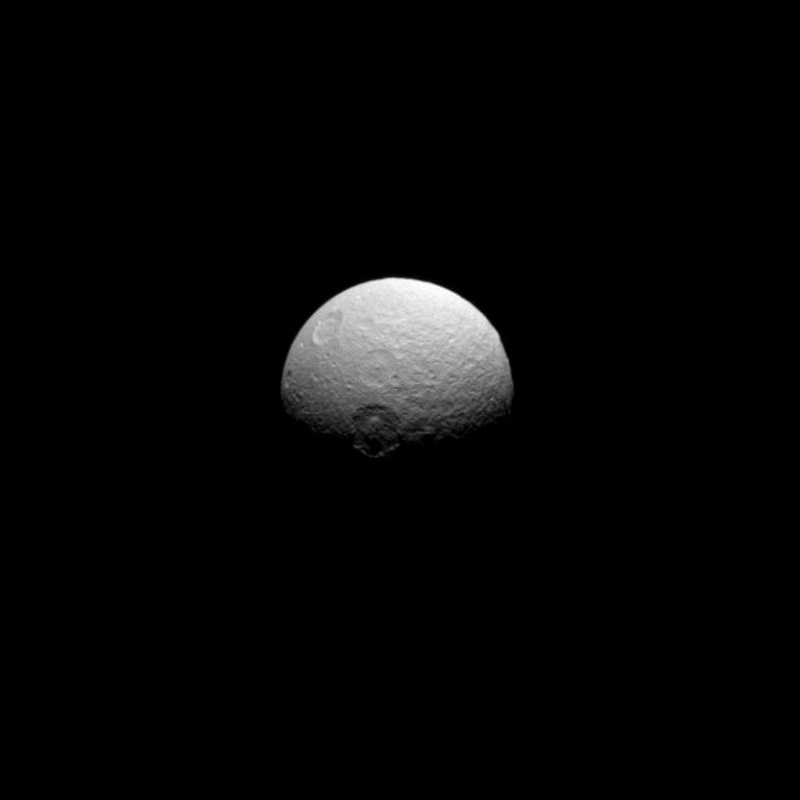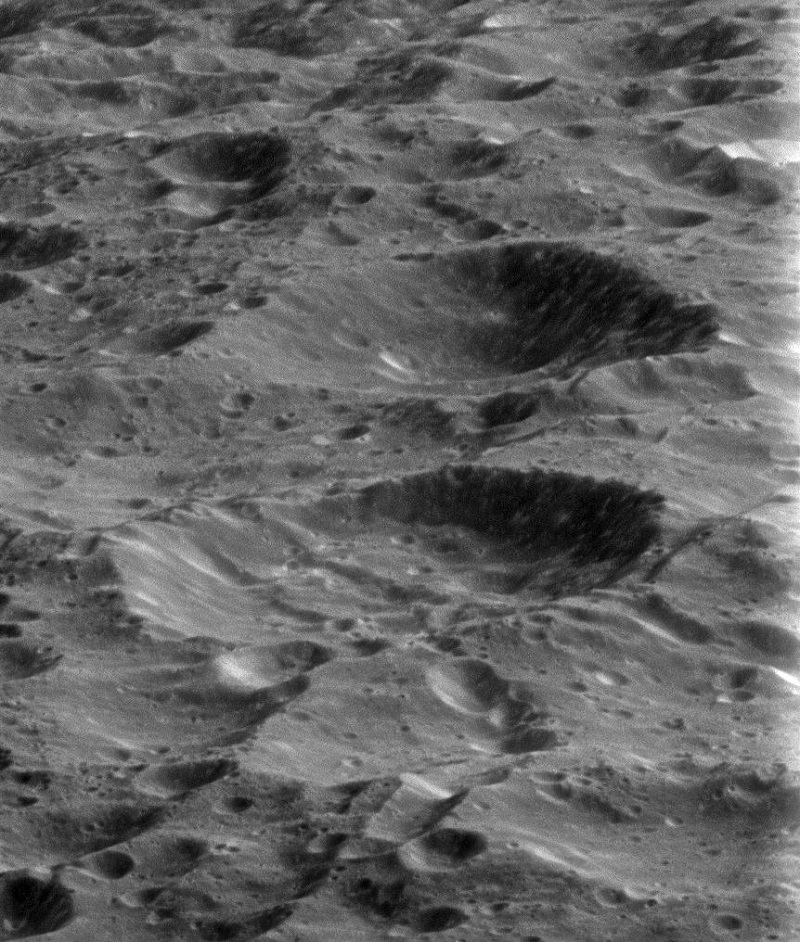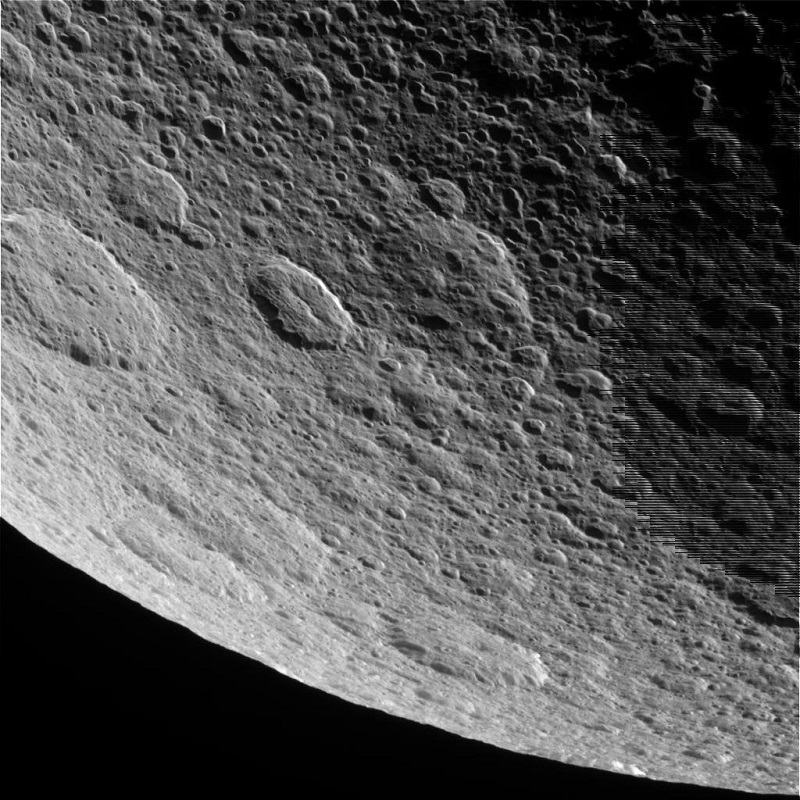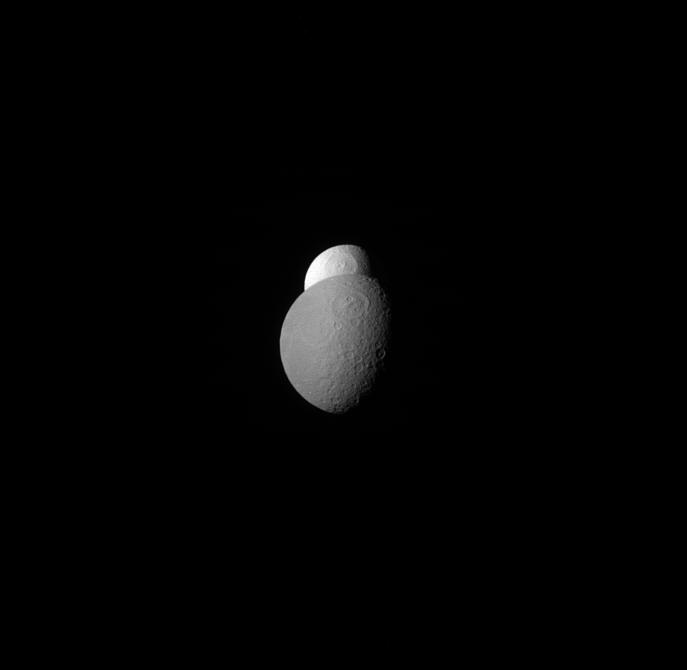NASA dixit:
“May 16, 2013. The craters of Tethys tell the story of a violent history marked by impacts. The names of the craters also tell oft-violent stories: in this case, the Iliad and the Odyssey. Here, we see the craters Melanthius (near the center, at the day/night terminator), Dolius (above Melanthius), and Penelope (upper left almost over the limb). Penelope was the faithful and wise wife of the Greek hero Odysseus, Dolius was their loyal gardener, and Melanthius was Dolius’ son.
This view looks toward the leading side of Tethys. North on Tethys is up and rotated 32 degrees to the right. The image was taken in visible light with the Cassini spacecraft narrow-angle camera. The view was obtained at a distance of approximately 684,000 miles (1.1 million kilometers) from Tethys and at a Sun-Tethys-spacecraft, or phase, angle of 63 degrees. Image scale is 4 miles (7 kilometers) per pixel. The image has been zoomed in by a factor of 1.5.”
“After almost 20 years in space, NASA’s Cassini spacecraft begins the final chapter of its remarkable story of exploration: its Grand Finale. Between April and September 2017, Cassini will undertake a daring set of orbits that is, in many ways, like a whole new mission. Following a final close flyby of Saturn’s moon Titan, Cassini will leap over the planet’s icy rings and begin a series of 22 weekly dives between the planet and the rings.
No other mission has ever explored this unique region. What we learn from these final orbits will help to improve our understanding of how giant planets – and planetary systems everywhere – form and evolve.
On the final orbit, Cassini will plunge into Saturn’s atmosphere, sending back new and unique science to the very end. After losing contact with Earth, the spacecraft will burn up like a meteor, becoming part of the planet itself.
Cassini’s Grand Finale is about so much more than the spacecraft’s final dive into Saturn. That dramatic event is the capstone of six months of daring exploration and scientific discovery. And those six months are the thrilling final chapter in a historic 20-year journey.”
Image credit: NASA














 Subscribe to blog posts using RSS
Subscribe to blog posts using RSS










